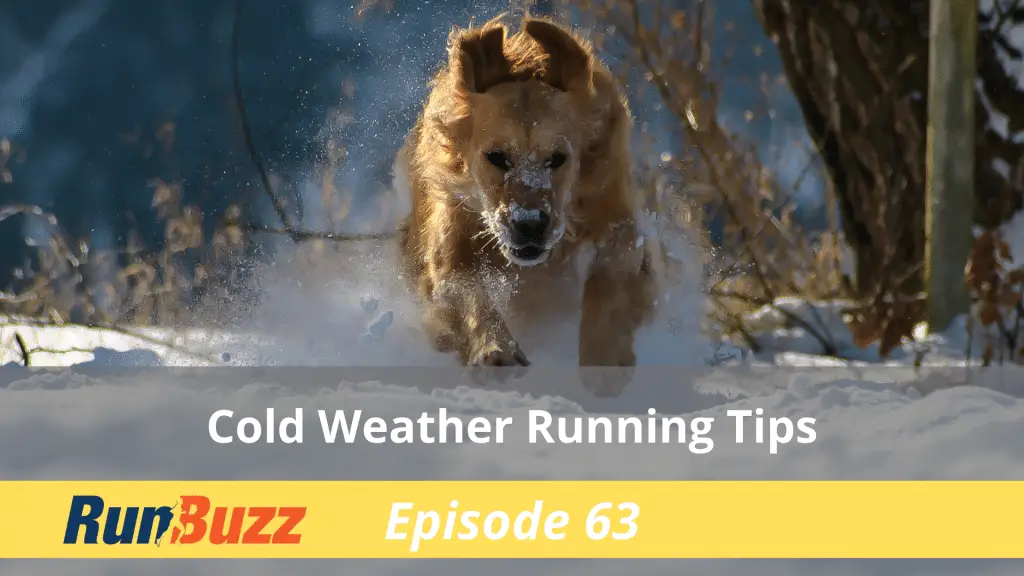In today’s episode, we share our best cold weather running tips for training safely in cold weather. We talk about the best ways to acclimate to cold temperatures, the best gear for cold weather training, runner safety, and some general tips on how to make running in cold weather more tolerable.
Cold Weather Running Tips
Cold Weather Acclimation
If you do not like running in cold weather, one of the hardest things to do is getting the motivation to run when temperatures drop. However, if you stick with it, it does get easier because of the process known as acclimation.
Exposure to cold weather (or the same works with hot weather), infrequent increments can help your body adjust to the cold weather. What feels cold today, will not feel as cold 2-3 weeks from now, IF you make an attempt to spend time in the elements getting your body used to the weather.
There are two basic ways to get acclimated:
- 1Just suck it up, layer up, and push yourself to run in the cold (this requires more mental and physical fortitude)
- 2Expose yourself to cold weather in more frequent, but shorter duration bursts. For example, take your dog for a walk several times a day around the block, park further out in the parking lot when you go shopping and spend part of your run outside and part of your run on the treadmill, slowly increasing your exposure over a 2-3 week period until acclimated.
Listen to the podcast for more cold weather running tips around acclimating to cold weather.
Cold Weather Gear
There is running gear for just about every weather condition. Cold weather running gear follows the same rules as warm weather running gear, as far as finding gear that is moisture-wicking, especially if using a base layer. There is even gear that you can wear on your running shoes to help with traction. Yaktrax works great for packed snow or conditions where you need a little more bite with your footing.
For best results, dress as if it is 20 degrees warmer than it is. As your body warms up during the run, the outdoor temperature will start to feel warmer than it actually is. For example, 30 degrees Fahrenheit will feel more like 50 degrees Fahrenheit once you get moving.
When shopping for cold weather gear, look for running pants and jackets that are cold-weather rated. Some clothing is designed for moderate temperatures (Spring and Fall for most) and other gear is rated for even colder temperatures. Finding the right gear for the right weather condition can go a long way towards feeling comfortable when the weather isn’t perfect for running.
Use hats and gloves, and if temperatures are extremely cold, layer up. Always wear a hat as most heat is lost through your head. Using hand warmers and/or toe warmers can also make your runs more enjoyable.
Last update on 2024-04-18 / Images from Amazon Product Advertising API
Last update on 2024-04-18 / Images from Amazon Product Advertising API
Last update on 2024-04-18 / Images from Amazon Product Advertising API
Listen to the podcast for more cold weather running tips and cold weather running gear.
Cold Weather Safety
Running in the winter usually comes with running in the dark if you are someone who usually runs in the reflective gear and other items that help make you more visible.
Additionally, running in the cold does introduce risks such as hypothermia, frostbite, and exercise-induced asthma. One of the biggest risks we have as runners is working up a good sweat, then getting injured far from our car or home. If we have nowhere to take shelter or the ability to call for help it can lead to hypothermic conditions. Keep in mind, many phones can get so cold that the battery dies. Always have a warm place next to your body to stow your phone.
Listen to the podcast for more cold weather running tips focused on safety and hear my story of being stranded 2 miles from home with my dog and a phone that did not work.
I hope you enjoyed this episode of the RunBuzz podcast.
Happy Running!
- About the Author
- Latest Posts

Steve Carmichael is a running coach, sports performance coach, nutrition coach and has been a recreational runner for over 18 years. Steve holds multiple certifications as a certified running coach through the RRCA and USA Track and Field as well as he is a NASM certified personal trainer, and PN1-L1 certified nutrition coach.
Steve has been coaching since 2010 and has helped thousands of runners online and in the Central Ohio area maximize performance and run injury-free.
Steve is the founder of RunBuzz and Run For Performance.com. If you are interested in working with Steve though his online running and strength coaching services, feel free to reach out.

